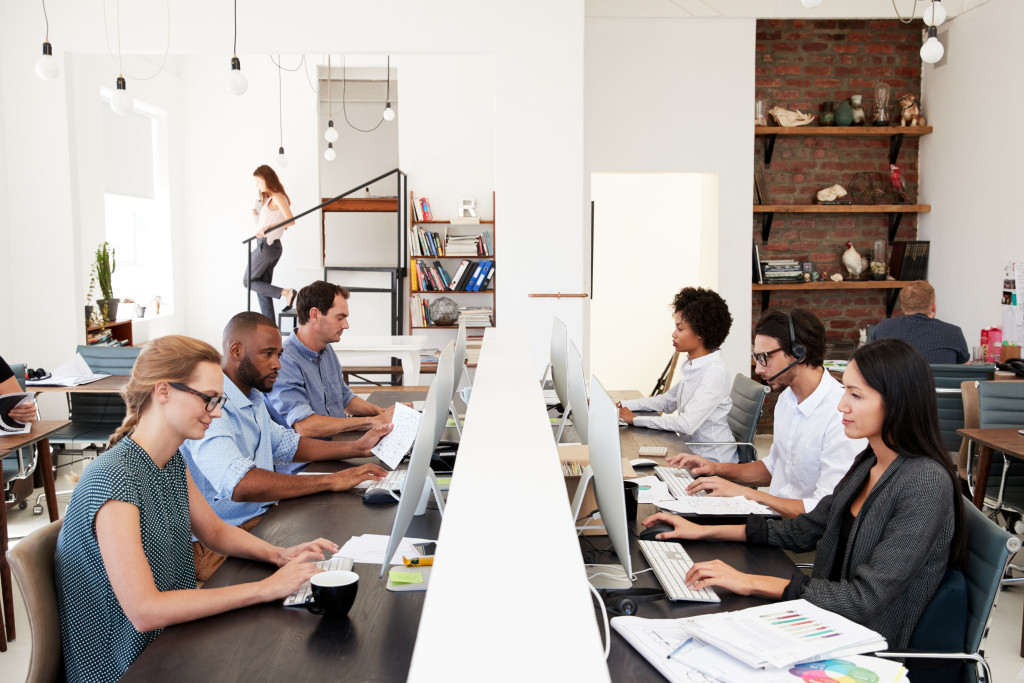The workplace is many things. It can be a space for productivity, with workers busily completing tasks and meeting deadlines. It can also be a source of camaraderie, where employees bond over shared interests and common goals.
But above all else, the workplace should be a safe environment. It is true whether you work in an office, a factory, or any other type of business. Unfortunately, accidents can happen anywhere, and it’s essential to stay prepared.
Workplace safety is a critical issue for all businesses. It is vital to have a practical, safe design in place to ensure a safe environment. Here are a few things to consider when creating a secure office.
Spacious Layout
When it comes to the office layout, safety should be a top priority. After all, cramped and cluttered spaces can lead to accidents. To avoid this, employers should create a spacious layout that is easy to navigate. It will help employees avoid dangerous areas and minimize the chances of an accident happening.
Employers can design a spacious layout by creating an open floor plan. This layout is becoming increasingly popular in business as it promotes collaboration and communication. It also allows employers to keep a closer eye on their employees, which can help reduce the risk of accidents.
The flooring will also matter when it comes to safety. If your office is in a high-rise building, then it’s important to have waterproof decking. This material will prevent water from seeping through the cracks and causing accidents.
Waterproof decking is a must-have for any office in a high-rise building. It will prevent water from seeping through the cracks and causing accidents.
Another safety hazard to consider is slippery flooring. Wet floors can lead to slips and falls, which can cause serious injuries. To avoid this, employers should install non-slip flooring in their offices.
In addition to a spacious layout and proper flooring, employers should also consider safety when arranging furniture. For example, they should avoid placing heavy objects near exits and provide clear walkways through the office. By taking these simple steps, employers can create a safe environment for their employees.
Secure Doors and Windows
Another safety issue to consider is the security of doors and windows. In an office setting, doors and windows should be sturdy so people cannot easily break them. They should also be equipped with locks to deter intruders.
Reinforcing those entry points will require investments in time and money. But it will ultimately create a safer environment for your employees.
Doors and windows are essential to any office, but they can also pose a safety hazard if not properly secured. By taking the time to protect these openings, employers can help create a safe environment for their employees.
Proper Lighting

Proper lighting is also essential for a safe office. Poor lighting can lead to accidents, so employers should ensure adequate light in all work areas.
There are a few things to consider when it comes to lighting:
- Employers should ensure enough light to illuminate the space properly.
- They should avoid using harsh fluorescent lights, which can cause eye strain and headaches.
- They should use motion-sensor lights in dark areas to deter intruders and minimize the chances of an accident happening.
Natural lighting is the best type of light for an office. It can provide numerous health benefits, including improved mood and increased productivity. But if natural light is not an option, employers should use artificial lighting to create a safe and comfortable work environment.
Other Office Hazards
Employers should be aware of potential hazards in the office to ensure employee safety. By identifying and addressing these hazards, employers can help create a safe working environment for their employees.
Some of the most common office hazards include slips and falls, hazardous materials, and ergonomic injuries. Slips and falls can happen because of poor design and equipment placement. Hazardous materials can include anything from chemical spills to radioactive materials. Ergonomic injuries can happen because of repetitive motions, improper lifting techniques, and prolonged exposure to computer screens.
By identifying and addressing these hazards, employers can help prevent accidents and injuries in the office. Employees are more likely to be safe when they are aware of the potential dangers in their workplace. Employers should take the time to properly train their employees on how to identify and avoid potential hazards.
Create an Emergency Plan
In an emergency, it’s crucial to have a plan in place. Employers should designate someone to handle emergencies and train all employees on what to do in case of an accident or fire.
The emergency plan should include a list of evacuation routes and a designated meeting spot. Employees should also have a copy of the procedure to review it periodically. By taking these steps, employers can help ensure their employees stay prepared in an emergency.
Conclusion
Employers can create a safe environment for their employees by taking the time to consider safety. By following these simple tips, employers can help protect their employees from potential hazards.

